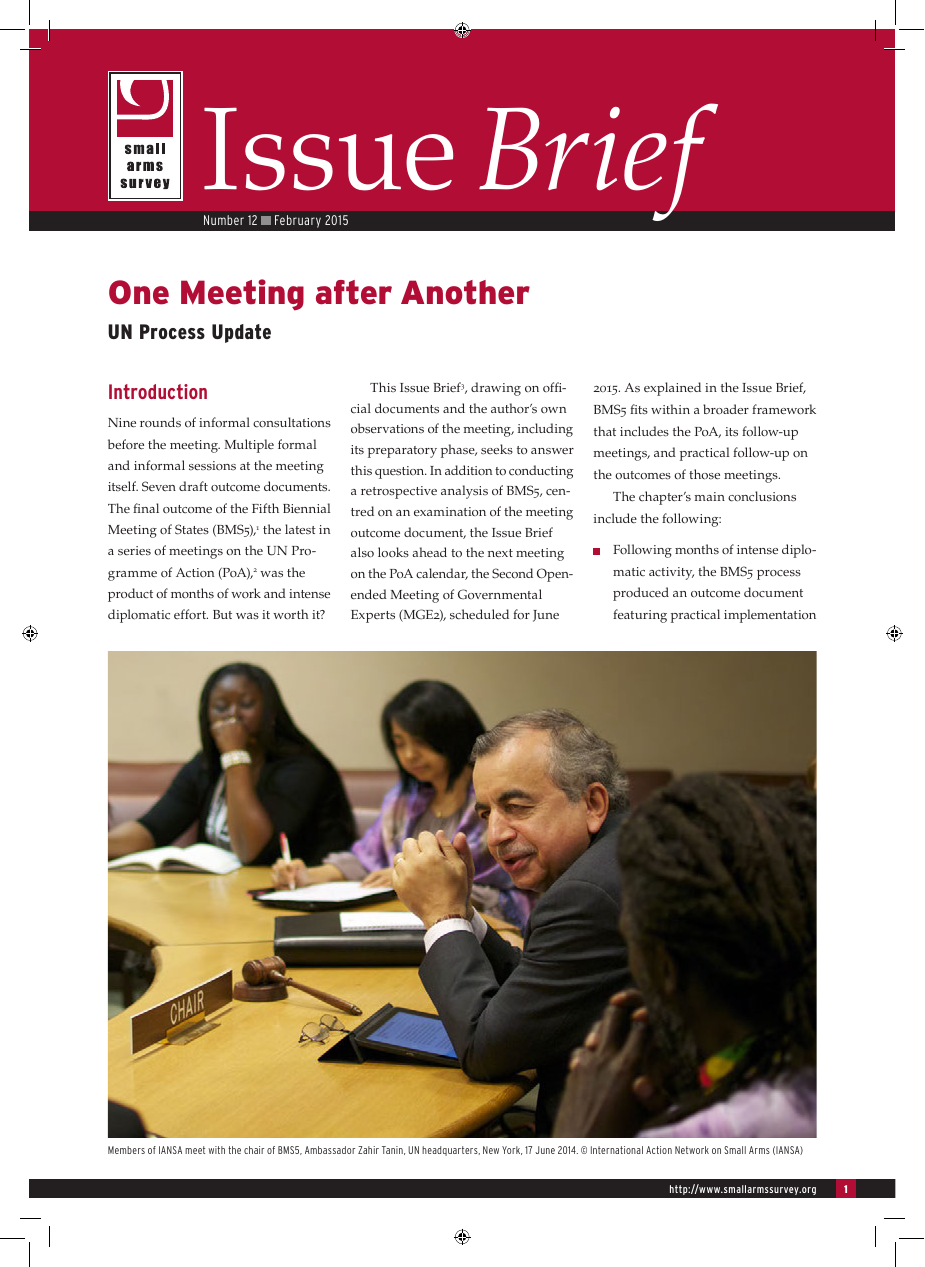
One Meeting after Another: UN Process Update (Issue Brief 12)
A new Small Arms Survey Issue Brief, One Meeting After Another: UN Process Update, draws on official documents and the author’s own observations of the Fifth Biennial Meeting of States (BMS5) to assess the meeting. BMS5 was the latest in a series of meetings on the UN Small Arms Programme of Action (PoA).
In addition to conducting a retrospective analysis of BMS5, centred on an examination of the meeting outcome document, the Issue Brief also looks ahead to the next meeting on the PoA calendar, the Second Open-ended Meeting of Governmental Experts (MGE2), scheduled for June 2015, reviewing the issues that are likely to be discussed.
As explained in the Issue Brief, BMS5 fits within a broader framework that includes the PoA, its follow-up meetings, and practical follow-up on the outcomes of those meetings.
The main conclusions of the report, which will also appear as a chapter in the forthcoming Small Arms Survey 2015, include:
- Following months of intense diplomatic activity, the BMS5 process produced an outcome document featuring practical implementation measures in the areas that states discussed (stockpile management; marking, record-keeping, and tracing; and international cooperation and assistance).
- The BMS5 outcome builds on previous PoA meeting outcomes by, for example, promoting women’s participation in PoA-related processes, highlighting the importance of stockpile security and weapons tracing in conflict and post-conflict situations, and emphasizing training in building sustainable capacity for PoA implementation.
- The BMS5 text also encourages the exchange of tracing results and other information, as well as robust stockpile management, for purposes of reducing diversion risks.
- Modular weapons design complicates the task of unique identification, which is essential for tracing. Policy responses include the identification of a ‘control component’ for these weapons.
- Unlike metal firearms, polymer guns are difficult to mark durably, as the International Tracing Instrument (ITI) prescribes. Policy guidance is needed on issues such as the marking methods applicable to polymer firearm parts and the depth and placement of such markings.
- Current norms, both national and international, are largely adequate for the control of 3D-printed firearms, but their application is more difficult. Governments, moreover, have a clear interest in preparing for the day when fully functional 3D-printed firearms can be produced easily and economically.
- Certain new technologies could improve weapons marking, recordkeeping, and tracing, strengthen stockpile security, and prevent unauthorized use, but critical barriers to their adoption and diffusion must first be overcome.
Have your say about Small Arms Survey publications and products: take 5 minutes to fill out our questionnaire.
For more:
- Resources on privately made firearms